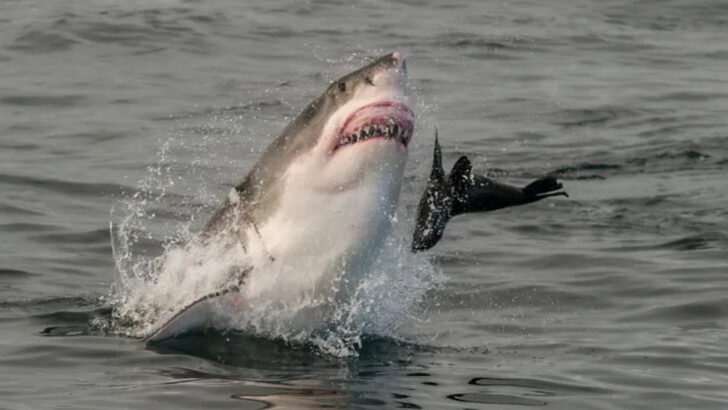They’re not mindless killers—they’re ocean royalty.
Great white sharks have been cast as villains for decades, but the truth is far stranger—and cooler—than fiction. These majestic predators rule the seas with senses so sharp, they can detect a single drop of blood in 25 gallons of water. But that’s just the beginning.
They can leap like dolphins. They migrate like whales. Some even show signs of curiosity and social behavior. Wait—social great whites? Yep, jaws just dropped.
If you thought you knew sharks, prepare to have that confidence shredded like bait on a hook. These 14 facts about great whites might just flip everything you thought you knew about the ocean’s most misunderstood superstar.
Shark’s Sixth Sense
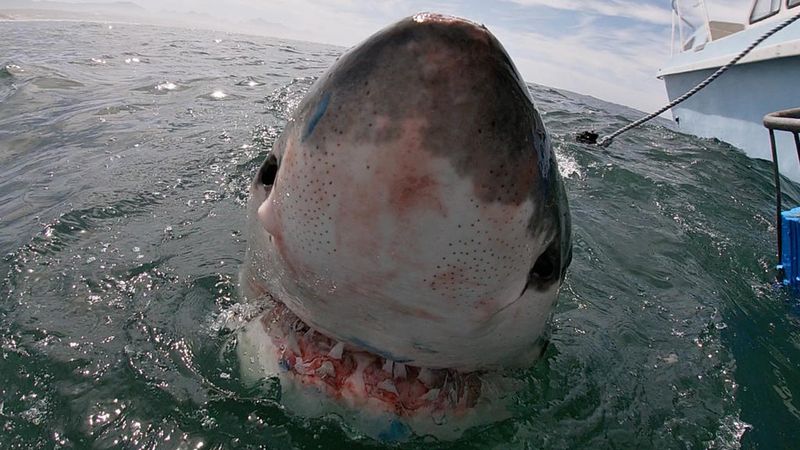
Imagine navigating the vast ocean with an invisible guide. Great white sharks possess a remarkable sixth sense known as electroreception. This allows them to detect the electric fields generated by other creatures, enabling them to locate prey even when it’s hidden beneath the sand. The sharks’ snouts house specialized organs called ampullae of Lorenzini, which are sensitive to the faintest electrical signals. This ability not only aids in hunting but also helps them navigate the open seas. Such a sophisticated sensory system highlights their evolutionary prowess, setting them apart as apex predators in the marine hierarchy.
A Tooth Fairy’s Nightmare
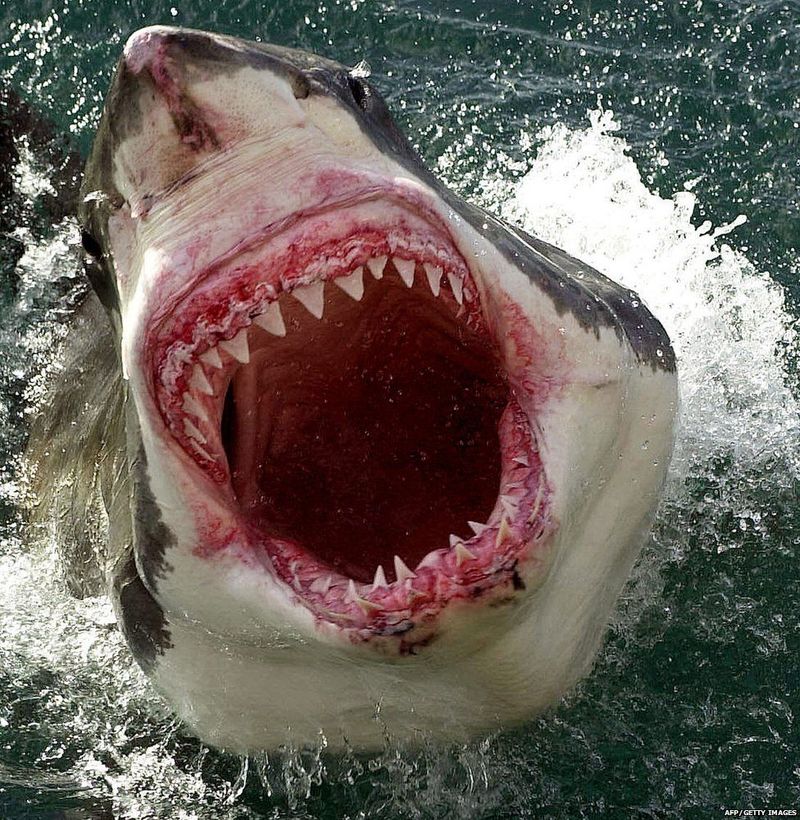
Did you know that great white sharks can have over 300 teeth at a time? These teeth are arranged in multiple rows, ensuring that a new tooth is always ready to replace any that fall out. This constant dental renewal system is vital for their survival as it allows them to maintain their sharp predatory tools throughout their lives. The teeth are serrated and triangular, ideal for slicing through flesh with precision. This relentless cycle of tooth replacement underscores their adaptability and efficiency as hunters, ensuring they’re always prepared for their next meal.
The Great Traveler
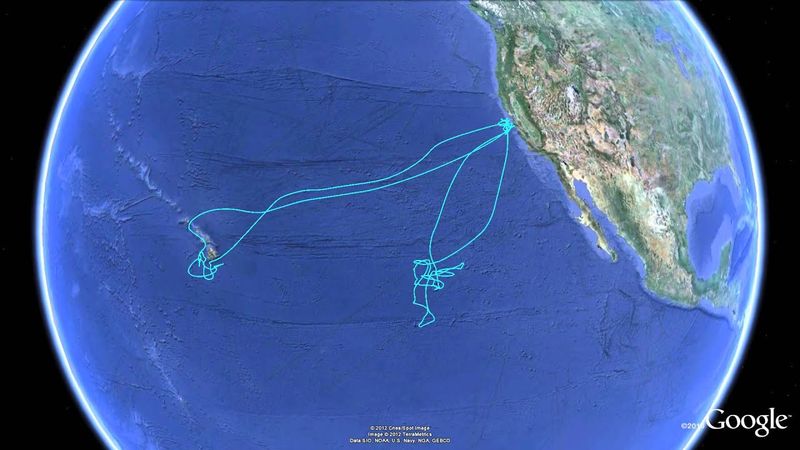
Embarking on epic journeys across the globe, great white sharks are renowned for their migratory nature. They travel thousands of miles between feeding and breeding grounds, showing a level of endurance and navigation that fascinates researchers. Despite their size, they glide through the water with an elegance that speaks to their mastery of the ocean. These migrations are not random; they follow specific routes that have been etched in their instincts over millennia. Such long-distance travel helps maintain genetic diversity and ensures the survival of the species in varying marine environments.
The Apex Predator’s Diet
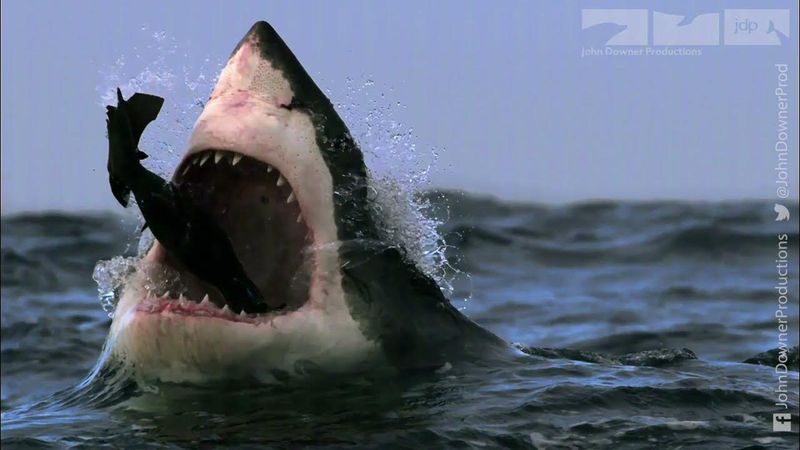
With an appetite for seals, sea lions, and even small whales, great white sharks sit comfortably at the top of the food chain. Their diet is varied and depends on their location, showcasing their adaptability as hunters. Preferring fatty, energy-rich prey, they can consume several pounds of meat in a single bite. This dietary preference supports their active lifestyle, providing the necessary energy for long migrations and high-speed pursuits. Their role as apex predators is crucial in maintaining the balance of marine ecosystems, preventing the overpopulation of their prey species.
Mysterious Breeding Habits
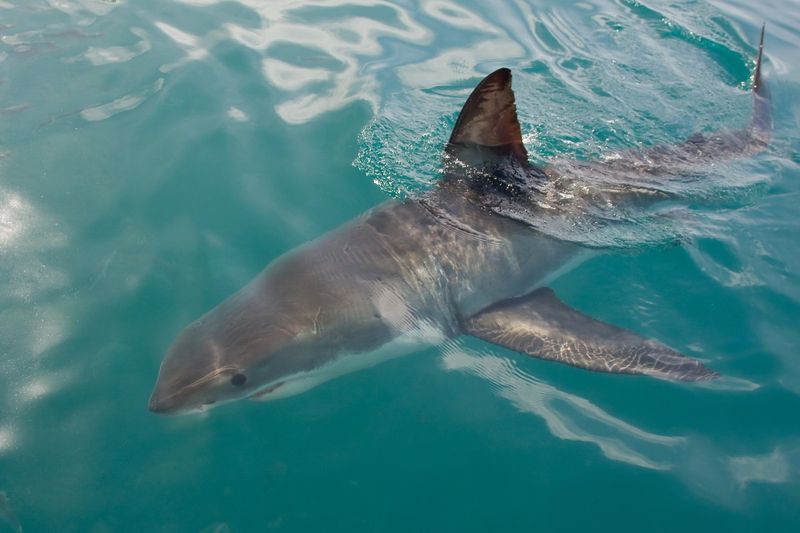
While much is known about the great white shark’s hunting prowess, their breeding habits remain shrouded in mystery. Unlike many other marine species, great white sharks give birth to live young, known as pups. The gestation period is believed to be lengthy, but precise details are elusive. Researchers have yet to observe a great white shark nursery, adding to the intrigue surrounding their reproductive strategies. This veil of secrecy fuels ongoing scientific exploration as biologists strive to uncover the secrets of their life cycle, aiming to protect these majestic creatures better.
The Social Side of Sharks
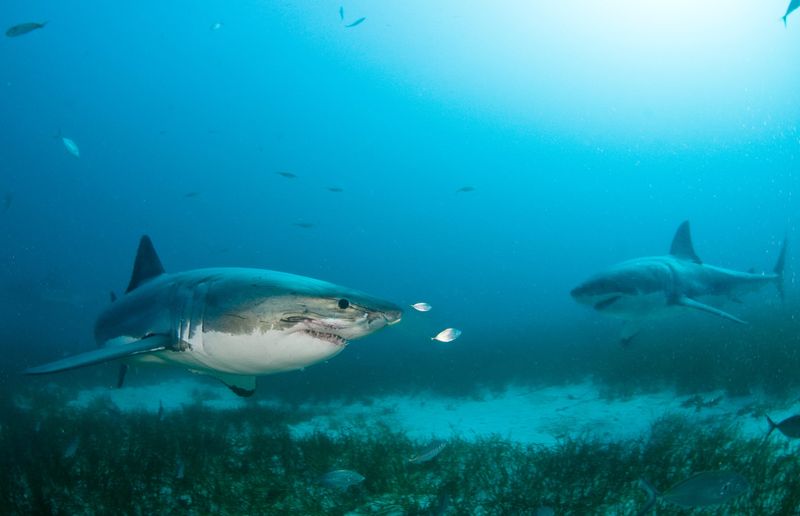
Contrary to their solitary image, great white sharks exhibit social behaviors that intrigue scientists. Observations have revealed that they can form temporary groups, particularly around rich feeding grounds. These social gatherings suggest a level of interaction that challenges the notion of sharks as lone hunters. During these encounters, sharks have been seen to establish a social hierarchy, with certain individuals assuming dominant roles. This social structure hints at a complex cognitive ability, shedding light on their adaptive intelligence and the intricate dynamics of their oceanic communities.
Speed and Agility

With a streamlined body built for speed, great white sharks are among the fastest swimmers in the ocean. They can reach speeds up to 25 miles per hour, a necessity when ambushing swift prey like seals. This agility is complemented by their impressive leaping ability, known as breaching, where they propel themselves out of the water in a spectacular display. Such prowess is not just for show; it plays a crucial role in their hunting strategy, allowing them to surprise and capture prey with remarkable efficiency. Their speed and agility are testaments to their evolutionary success.
Unique Hunting Techniques
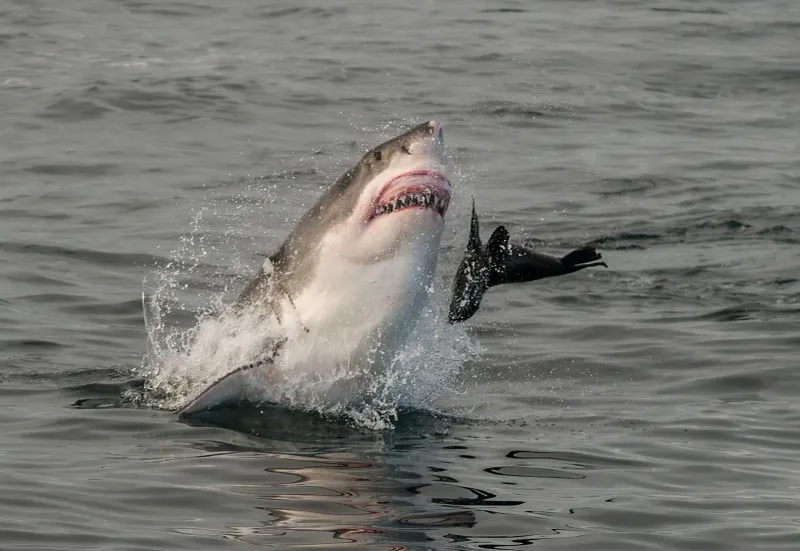
Great white sharks employ unique hunting techniques that set them apart from other marine predators. One such method is breaching, where they launch themselves out of the water to catch fast-moving prey, like seals. This dramatic maneuver is both a hunting strategy and a display of their physical capabilities. Additionally, they often employ a hit-and-run tactic, delivering a powerful bite before retreating to let their prey weaken. These tactics underscore their intelligence and adaptability, allowing them to thrive in diverse marine environments and maintain their status as apex predators.
Sharks’ Color Changing Ability

Among the many surprises in the world of great white sharks is their ability to change color. This chameleon-like skill helps them blend into their surroundings, making them more elusive to both prey and predators. The shading can vary from a light grey to a deep blue, providing excellent camouflage in the oceanic environment. This color adaptation is a testament to their evolutionary finesse, allowing them to approach prey stealthily and avoid detection. Such adaptability in their appearance plays a significant role in their survival strategy, enhancing their effectiveness as hunters.
The Immune System Marvel
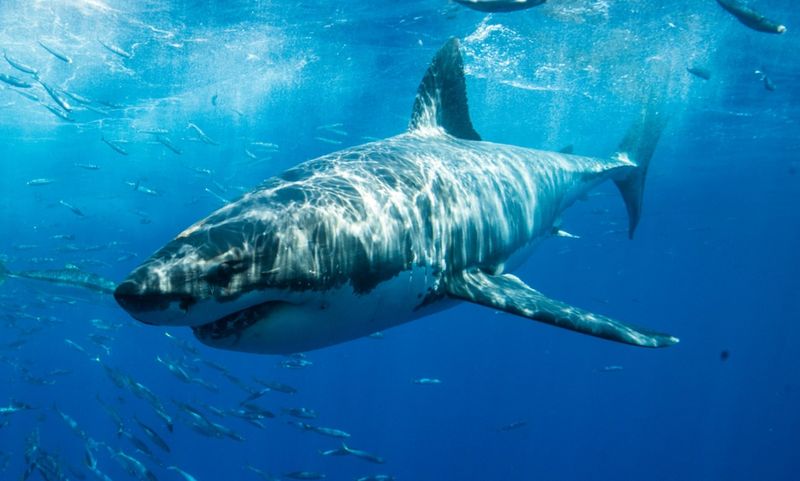
The great white shark’s immune system is a marvel of nature, contributing to their long lifespan and resilience. Their bodies produce a unique array of antibodies, allowing them to fend off various infections and diseases. This exceptional immune response is a subject of scientific interest, with researchers exploring the potential medical applications for humans. Understanding their immune system could lead to breakthroughs in treating human diseases. Such biological resilience not only supports their survival but also cements their status as one of the ocean’s most formidable creatures.
The Enigmatic Eye
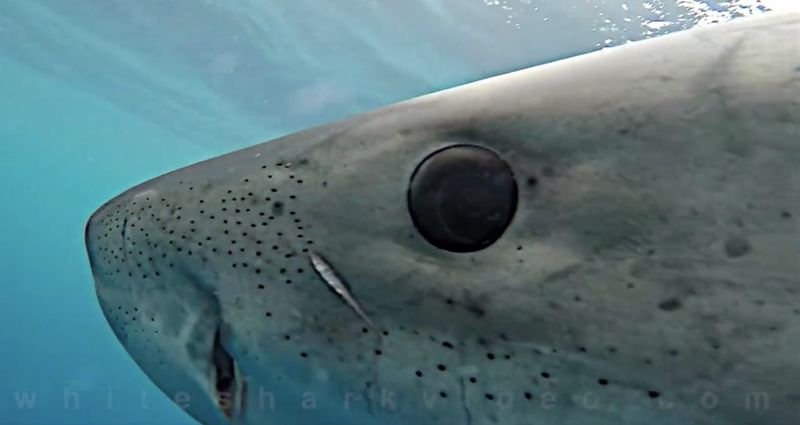
The eyes of great white sharks reveal a fascinating adaptation. Equipped with a nictitating membrane, these protective eyelids shield their eyes during feeding frenzies and confrontations. This membrane provides an extra layer of defense, ensuring their vision remains unscathed while they attack prey. The clarity and range of their vision allow them to detect movement and navigate their underwater world with precision. Researchers continue to study the intricacies of their visual system, seeking insights into how these apex predators perceive their environment and make split-second decisions during hunts.
The Lifelong Learner
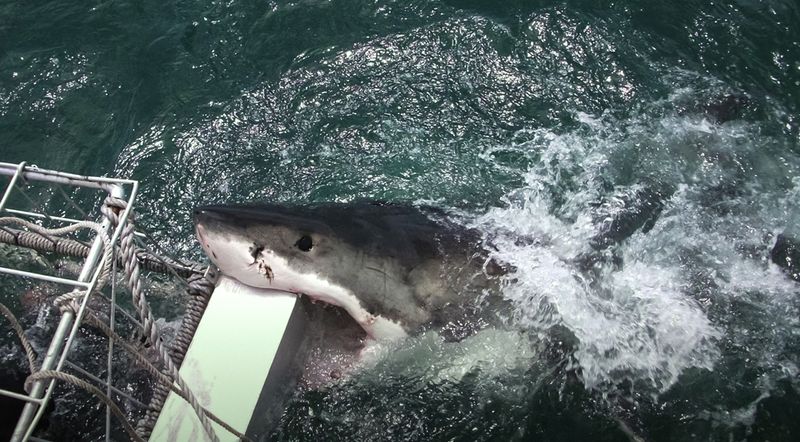
Great white sharks demonstrate a capacity for learning and memory that surprises many. Through experiences, they refine their hunting techniques and adapt their strategies to different environments and prey types. This cognitive ability hints at a level of intelligence that goes beyond pure instinct. By observing and imitating the successful behaviors of others, they enhance their survival skills, ensuring they remain effective hunters throughout their lives. This aspect of their behavior highlights the complexity of their interactions and their ability to evolve with the changing dynamics of the ocean.
The Acoustic Communicators
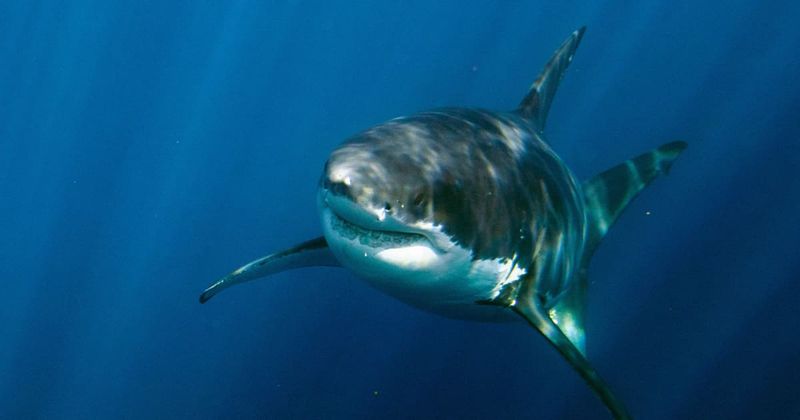
In the silent depths of the ocean, great white sharks have been observed using sound to communicate. This acoustic signaling challenges the perception of them as voiceless hunters. These sounds are believed to play a role in social interactions, helping to establish dominance and coordinate movements within groups. The study of their acoustic communication is still in its infancy, but it promises to reveal new dimensions of their social behavior. Understanding these vocalizations could provide insights into their complex social structures and enhance our appreciation of these enigmatic creatures.
The Longevity Puzzle

The lifespan of great white sharks remains one of the ocean’s great mysteries. Estimates suggest they can live up to 70 years or more, but the exact age is difficult to determine. Understanding their longevity involves studying growth rings in their vertebrae, similar to counting tree rings. This research has opened up questions about the factors contributing to their long life, such as their slow metabolic rate and robust immune system. The puzzle of their lifespan continues to intrigue scientists, offering a glimpse into the life history of these majestic sea rulers.

